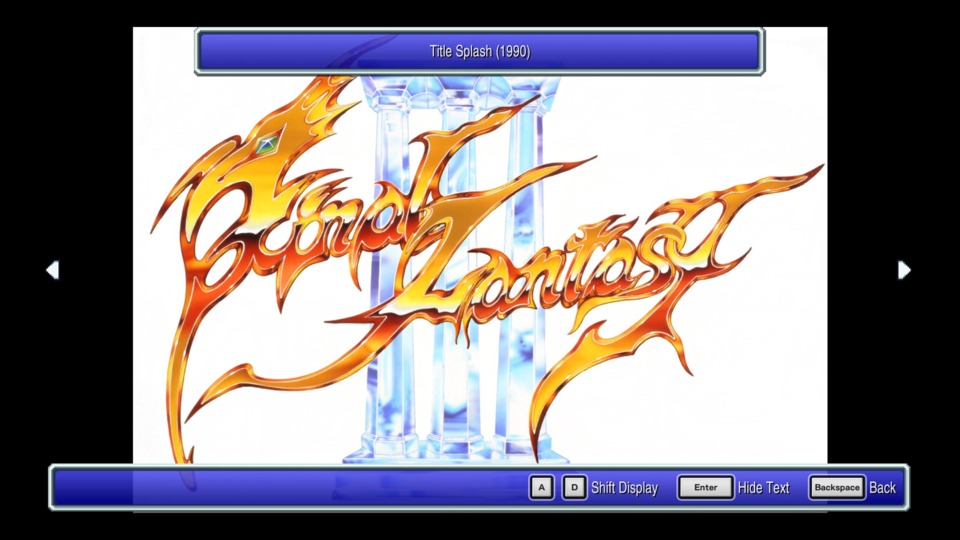
Well, here's the second part of my two-part retrospective looking at the jobs from Final Fantasy III and their indelible legacy on the games that have come out that bear the "Final Fantasy" moniker after that. If you missed the previous episode, you should click the link below. In general, this blog mini-series looks at every job in Final Fantasy III and assesses the core mechanics and possible pitfalls for these jobs across the three major releases of Final Fantasy III. Those are the Famicom, DS/3D remake, and Pixel Remaster releases. Sometimes, jobs are unique across all versions, whereas others stay relatively the same. Finally, to better communicate how these jobs have persisted beyond their appearance in Final Fantasy III, I will connect each to an icon or character in a subsequent Final Fantasy title, with spin-offs being fair game.
Before we jump into the jobs you unlock at the Water Crystal, I'd like to make a slight plea. This episode was an absolute pain in the ass to research. Starting with the Water Crystal, we begin to experience a LOT, and I do mean that, of jobs that have morphed and changed massively across the decades. Communicating those changes took a lot of work. Please let me know if you enjoyed even a small portion of this mental exercise. As with the previous episode, if you have suggestions about modern character connections I missed, consider dropping a comment, and I may include your input with credit.
ALSO, SPOILERS ABOUND IN THIS BLOG! YOU HAVE BEEN WARNED!
Water Crystal Classes
Geomancer - [Rating: C]
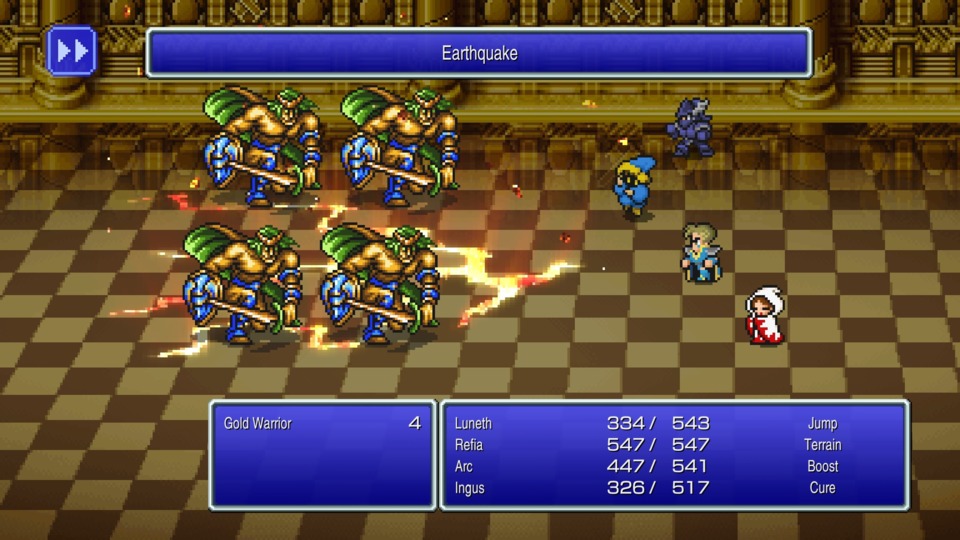
The Geomancer is tricky to assess in Final Fantasy III. There's a part in the game where things are cake if you take advantage of it, but that's one fleeting moment. The Terrain command can dole out massive damage and is a viable alternative to Black Magic when struggling with crowds of trash mobs in dungeons during the mid-game. Unfortunately, Bells are a crappy weapon type, and the Geomancer's spells are completely at the whim of chance, with you entirely unable to select the spells you want. They also change depending on your characters' presently occupied terrain. That last point could be more apparent while you play the game, but it isn't. Generally, I wouldn't say I like jobs that rely on chance or roulette reels, and that's a big problem here, with more than one job from the Water Crystal having the same issue. Nonetheless, casting what are ostensibly spells without worrying about spell slots is handy, and the fact the Geomancer is immune to Silence is also a plus.
Changes for the 3D remake - Little was done to make the Geomancer better in the 3D version of Final Fantasy III. In the 3D remake, the Geomancer unlocks at the Fire Crystal instead of the Water Crystal, which is one of the odder job relocation decisions in the 3D remake. Beyond that, the job seemingly is more random in the 3D remake, as the damage of the Geomancer's spells when using the Terrain command depends on your character's job level. Having an additional metric to get even the slightest bit of positive damage to a job that is STILL A ROULETTE REEL is a complete bummer, but it isn't the worst job in the 3D remake.
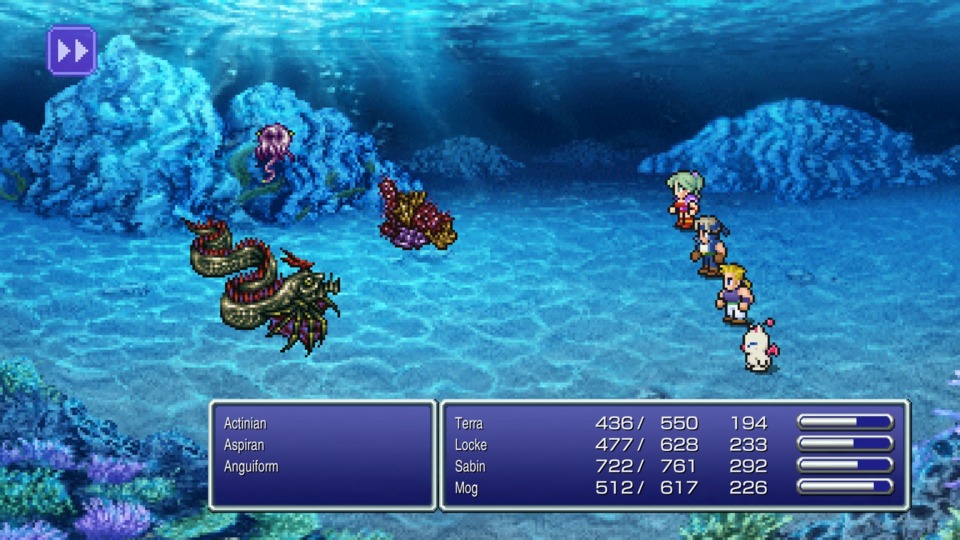
Franchise Comparison - It's Mog from Final Fantasy VI. The Geomancers in the Tactics franchise stand as the best "pure" representations of the job and its gameplay potential, and BOY ARE GEOMANCERS BUSTED when you know how to use them! The Tactics Geomancer is glorious, especially when you make Ramza one and equip him with an Ageis Shield! Nonetheless, Mog from Final Fantasy VI is a named character, and they do a far better job of making you work for your combat-positive gains while limiting you from smoking everything that stands before you with little effort. The Geomancer doesn't force you to track down spells or dances like Mog does in Final Fantasy VI, but like Mog, the Geomancer is a free spirit that feels ancillary to more substantive combat options. Both are "fun" and add variety to a relatively straightforward affair, but you would be crazy to opt for them long-term.
Dragoon - [Rating: A]
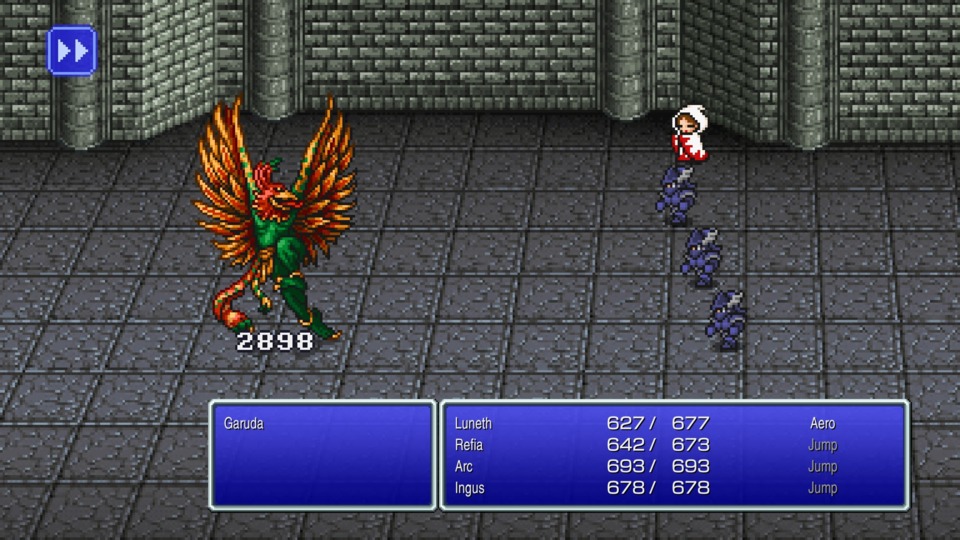
If a Final Fantasy game forces you to use a job, that job should at least slap, and the Dragoon in Final Fantasy III does indeed slap! Spears are an INCREDIBLE weapon, and the Dragoon has a robust assortment of heavy armor, only occasionally beaten out by the Black Knight and Viking, and is not replaced until you unlock the Ninja. The Water Crystal is STACKED with martial classes that hit hard. While the Dragoon isn't the hardest of these hitters, it is the most versatile, with the ability to dual-wield lances. This weapon type covers a variety of elemental and mechanical niches. For example, when you pair the Blood Lance with a duplicate or a higher damage-dealing variant, you have a self-sustaining character that rarely needs healing as long as you aren't fighting undead enemies. The Jump command has some immediate uses beyond always killing flying enemy types in one hit. With the Jump command, your Dragoon leaps into the air, and while they are removed from the battlefield for a turn, they will strike in the next turn and deal massive damage. It's important to note that while the Final Fantasy Dragoon starts at Final Fantasy II, Final Fantasy III codifies its underlying math and utility. Using the Jump command guarantees you never experience a Game Over as you face a possible party-wiping boss attack. Having a Dragoon is like buying insurance against the game's more brutal bosses. Its damage output could be better, but it does so much more than dealing damage that you can happily ignore that fact.
Changes for the 3D remake - The 3D remake leaves Final Fantasy III's Dragoon relatively untouched. The only notable change, like other jobs, is that the Dragoon's damage output is dependent on a formula rather than the original's die roll, which means the 3D remake emphasizes one's job proficiency level. The result is that there's a slower burn on the Dragoon. Nonetheless, the 3D remake knows to keep the Dragoon intact during the sequences where it is a necessity. Your attack advantage multiplier is massive whenever you use Jump on an enemy weak to Wind. Ultimately, it is still a handy job that only takes a slight step backward compared to other job changes in the 3D remake.
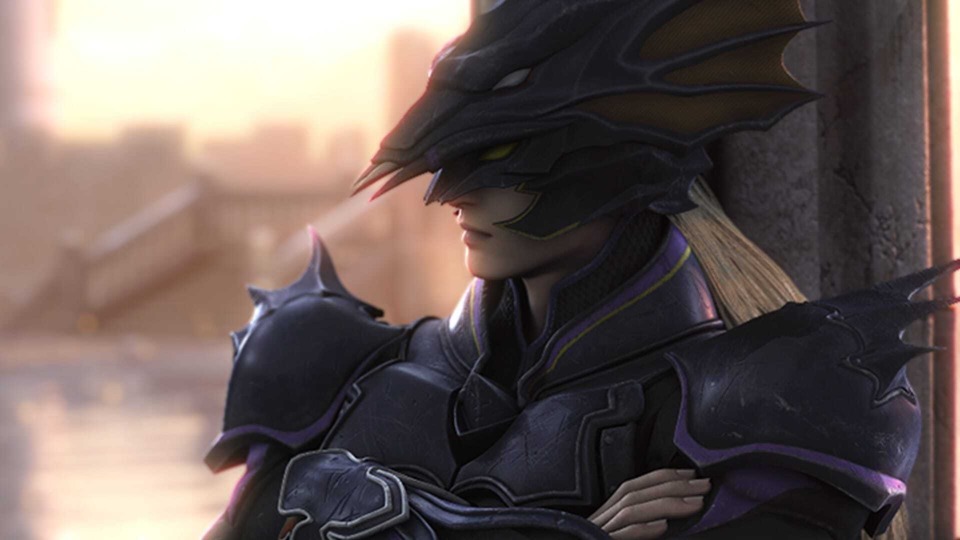
Franchise Comparison - How could it NOT be Kain Highwind from Final Fantasy IV? Square Enix still trots him as the mascot for the Dragoon, and to this day, when you pull up any of the Final Fantasy reference books when you turn to look at the "Dragoon" section, you always see Kain right there with his massive lance. Cecil might be the protagonist, but Kain may have him beat in terms of which Final Fantasy IV character has been used outside of the context of Final Fantasy IV in supporting media. Also, huge props to him for being the character that crystalizes the Dragoon armor, though he is not the first character to wear or use it. Estinien Wyrmblood from Final Fantasy XIV is an excellent modern pick. They seem married to the limited weapon and armor set of the Dragoon and love doing flippy shit when attacking. They have story arcs that have story arcs and seemingly have schemes layered upon schemes like a literal David Xanatos. Nonetheless, Freya from Final Fantasy IX is the correct "alternate" pick because, much like Final Fantasy III's Dragoon, you only ever want Freya jumping. Even if it is not her best option, you still opt for her to jump because it allows you to dodge dangerous turns during a troublesome encounter.
Viking - [Rating: D+]
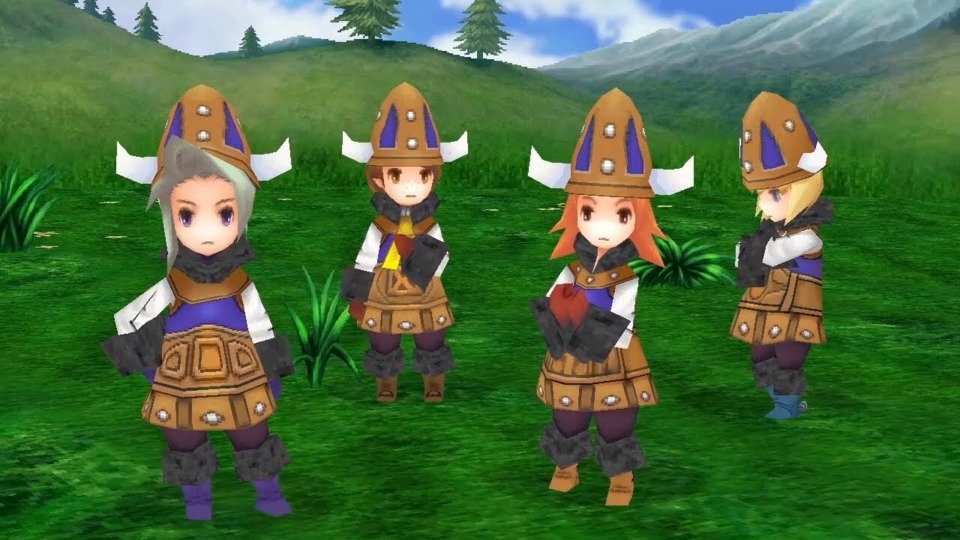
The Viking is one of the oddest failures in Final Fantasy III. Having a character with a massive pool of HP and can tank sounds like a good idea. The issue is that the original Viking couldn't provoke or draw aggro from enemies. It wasn't until the 3D remake that Square gave it a command or ability that made it capable of doing what it was meant to do. In the Famicom version, you can have a Viking add gobs of HP to your characters, but any attacks it pulls from enemies are incidental and not by design. Likewise, while it has AMAZING stat growth, especially in growing a character's HP, they are physically weak on the offensive end. Properly equipped Black Belts, Dark Knights, Dragoons, and Knights can out-damage Vikings even if Vikings can use hammers and axes. Plus, with its stat growth being so one-note, it's hard to justify using it when every other martial class at the Water Crystal is more well-rounded.
The Pixel Remaster has the courtesy of pulling a note from what it did with its Scholar in trying to strike a middle ground between the Famicom version and the 3D remake. It gives the Viking a unique ability called "Draw Attacks," which can only mean that the Viking is finally good, right? Well, here's the issue. While you can draw attacks from regular enemies, the "Draw Attack" ability isn't as helpful as you'd think. Critically, the boss attacks you are usually concerned about are AOE spells or maneuvers. The Viking doesn't do anything to prevent those from afflicting all of your party members from taking that damage. Take, for example, the Cloud of Darkness, whose only routine is to spam the same "Screw You" laser beam ad infinitum. Vikings don't redirect that beam of energy onto themselves because it cannot change the basic routines behind bosses and their most potent abilities. So, long story short, Vikings still suck!
Changes for the 3D remake - So, this point is a weird one. The 3D remake gives its Viking the "Provoke" ability, but there's a fairly decent chance the move doesn't work, and when that happens, you essentially are left with a character with a wasted turn. From levels one through twenty, the 3D remake Viking only has a "Provoke" success rate of 60%, which only improves by 10 percent every TWENTY LEVELS! That's right, your tank only has a 100% chance of doing what you want it to do, starting at level 99! On the flip side, using Provoke in the 3D remake lowers the defense of its target when it hits. The 3D remake also gives Vikings more attack power but at the cost of dropping its agility almost to zero. So, hopefully, you have a character that has no issues with taking damage if you become committed to using this job. Also, in this version of the game, all hammers inflict lightning damage. That is a double-edged sword, as there are bosses with magical resistances that can make these weapons entirely useless.
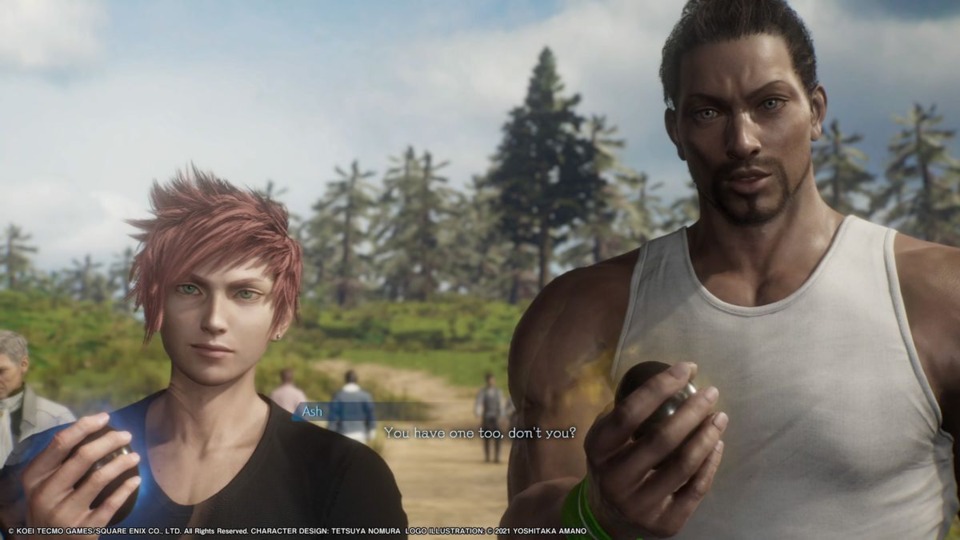
Franchise Comparison - I will have to cheat a bit with this one. Discounting characters that visually pay homage to Norse and Viking warriors, which would have opened things up to dozens of Final Fantasy XI and XIV characters, I'm going to fudge things and use characters that would be more considered Berserkers as that job has essentially become the franchise evolution of Final Fantasy III's Viking. Umaro in Final Fantasy VI is a mindless yeti, but they have a massive pool of HP for enemies to pick away at, reminiscent of the Viking. A better fit would be the later versions of Ash in Stranger of Paradise. With their mix of high HP and damage mitigation, when they unlock the Liberator tech tree, they feel like a Viking warrior about to set a village into flames. That's doubly the case when you have at least some of their Berserker tech tree unlocked.
Black Belt - [Rating: A+]

HERE WE GO! After giving the vanilla Monk in Final Fantasy III some shit, we finally have a punching-based class that deserves to be in your rotation! Beyond the Black Belt job being a heavy damage dealer, having a character that doesn't require a lot of financial investment, as it is better without armor or weapons, allows you to spend your resources elsewhere (i.e., Knights, Dragoons, and Black Knights). Likewise, around this point in the game, its biggest shortcoming (i.e., not having armor) becomes less of an issue, as your White Mage should be able to pop off the Protect spell without being too concerned about spell slots. The Black Belt's unique skills are a bit more mixed. The Boost Command, which raises your base attack power for your next attack, has its uses during boss encounters, but for the most part, you'll avoid it because you're better off attacking as is and not losing a turn. The Kick command is your AOE option in the Pixel Remaster version, and it is almost entirely useless because it does low damage to all of the enemies on your screen and does not scale at all. Black Magic is THE GO-TO for crowd control before you reach the Water Crystal, and that does not change after the Water Crystal. Did I also mention that the Black Belt's stats, outside of the magic-focused ones, are downright absurd in the Famicom and Pixel Remaster versions?
Changes For the 3D remake - Here's another job where the 3D remake commits almost no changes to a job other than to place it at a different crystal. In the 3D remake, the Black Belt unlocks at the Earth Crystal, whereas it unlocks at the Water Crystal everywhere else. Also, the 3D remake makes the Black Belt a more well-rounded character class with a more even stat growth that is not as titled towards Strength as in the original game. Oddly enough, the Black Belt is one of the few times when a Final Fantasy III job's unique ability becomes more transparent in the 3D remake, as the game more actively warns you not to use Boost a third time. So, props for that one!
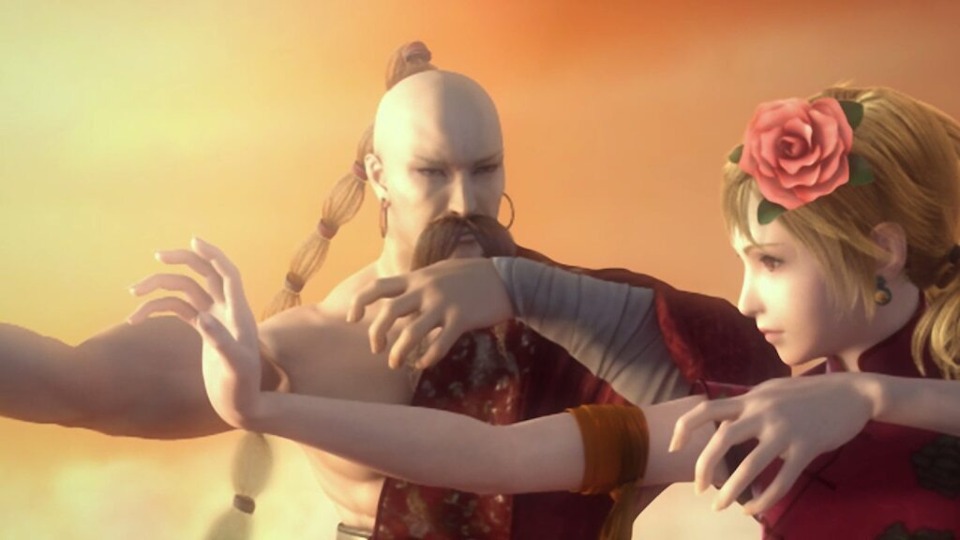
Franchise Comparison - The most straightforward comparison is the right one. The Black Belt in Final Fantasy III influenced the gameplay design of Yang in Final Fantasy IV to such a degree that it feels apt to mention him here. The AOE Kick command in the Pixel Remaster version of Final Fantasy III is the same one Yang has in IV, and it even has the same gameplay flaw that I can only imagine is a copy-paste job more than anything else. Snow from Final Fantasy XIII and Amarant Coral from Final Fantasy IX are respectable mentions, and both are Monk-hybrids with kung fu-like moves. In all cases, you have martial artists with straightforward playstyles with a few complications to make things interesting when you get tired of doing the same two or three combos or moves.
Dark Knight - [Rating: B]
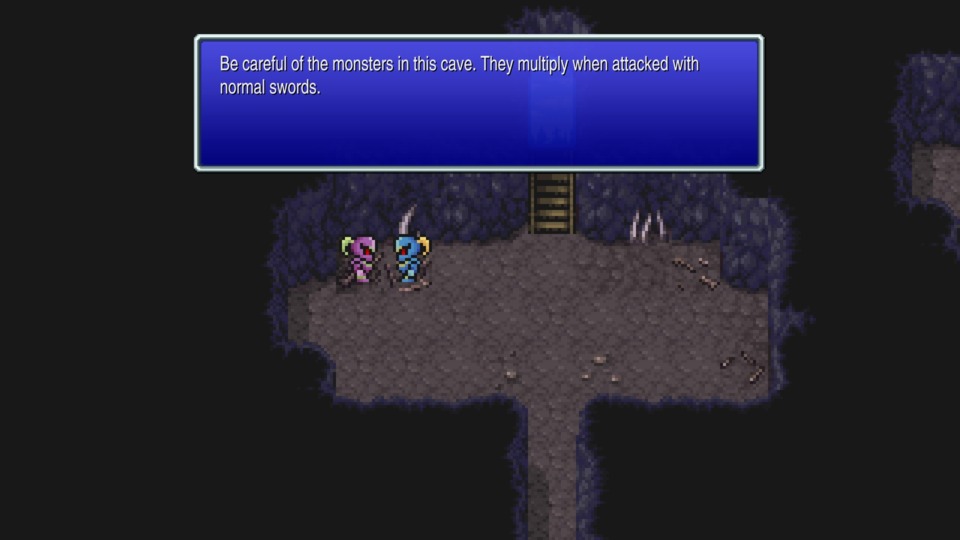
We have another job that is somewhat different across all versions of Final Fantasy III, including the Pixel Remaster version. The Famicom version of the Dark Knight is a Knight-Paladin hybrid as it would automatically deal with enemies that divide and multiply via its weapons. It could also use White Magic and even up to level three spells at that. Starting with the 3D remake, the Dark Knight gained a unique ability to handle enemy types that divide. Still, across all versions, Dark Knights that equip Katanas can deal additional damage to these enemies. The Pixel Remaster version of the Dark Knight provides you with the "Bladeblitz" ability, an AOE physical attack with some advantages against respawning enemies. Unlike the Dark Knight's unique ability in the 3D remake, there's no HP penalty in using this command, so when in environments like the Cave of Shadows where every enemy will divide or spawn, it's likely the only thing you want your Dark Knight to do.
The Final Fantasy III Dark Knight has multiple levels where using one is all but a necessity. In any environment with enemies that divide, not having even one Dark Knight makes that entire dungeon a laborious journey unless you run away from every random encounter, which is a viable strategy. The issue with the Dark Knight is that it is a glass cannon with armor made of paper. Worse, everything that makes them worth keeping around after the Cave of Shadows costs triple that of the standard array of equipment other jobs have in the game. In the Pixel Remaster, and this issue also applies to its equivalent in the 3D remake, using Bladeblitz anywhere outside of the Cave of Shadows feels like a wasted turn because it doesn't do a ton of damage. As a result, the Dark Knight feels like a gimmick job and an incredibly expensive one. Knights, Dragoons, and Black Belts all feel more valuable immediately and for less.
Changes for the 3D remake - Here's another odd example of the 3D remake being more straightforward than Final Fantasy III's Famicom and Pixel Remaster versions. How does the 3D remake Dark Knight deal with enemies that divide? Katanas do double damage against them, and one Dark Knight wielding a katana disables all enemies' ability to divide right from the get-go. It is actually EASIER to beat the Cave of Shadows in the 3D remake! In fact, the final boss at the Cave of Shadows, Hecatoncheir, does less damage in the 3D remake. The first downside to the 3D remake version of the Dark Knight is that its AOE physical attack, Souleater, comes at the cost of 20% of its caster's HP. On the flip side, it does a decent amount of damage on all the enemies on the screen, with a handy buff against enemies that can divide. The nice thing about this attack in the 3D remake is that it is one of the rare abilities that does complete damage even if you place your character in the back row, which you likely want to do with your Dark Knights. Unfortunately, as with any AOE attack in the 3D remake, it scales poorly on bosses and uses a formula that values your job proficiency.
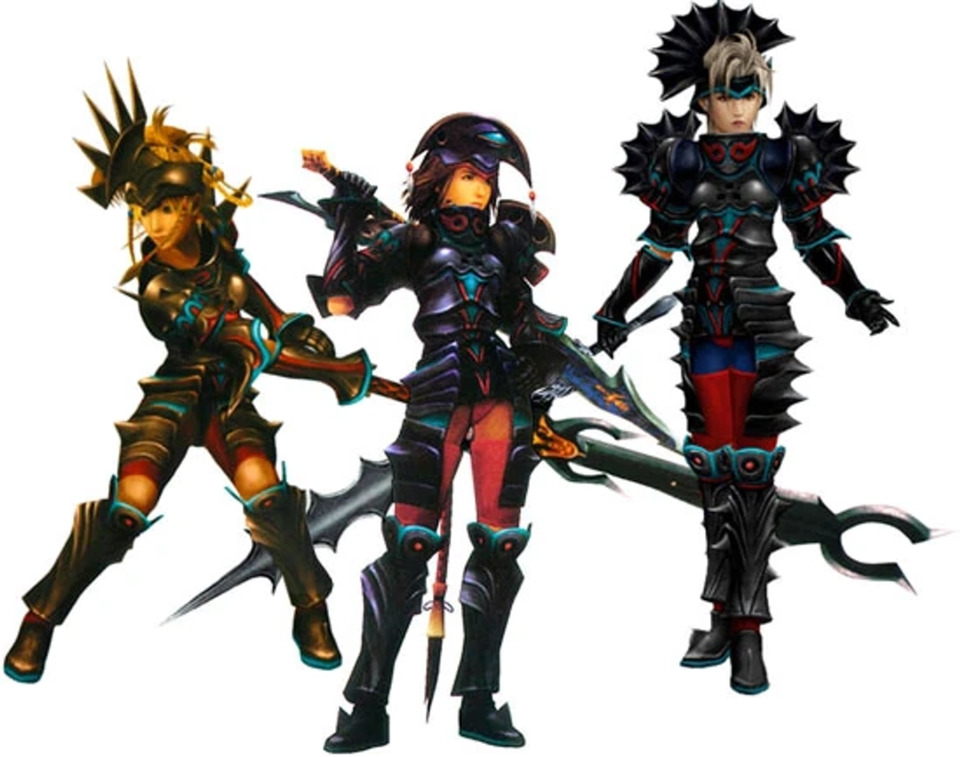
Franchise Comparison - Mentioning or picking Cecil from Final Fantasy IV has to be considered cheating. At this point, everyone who cares about Final Fantasy IV knows that his status as a Dark Knight is temporary, even though the Paladin version of Cecil is rarely seen outside of Final Fantasy IV. Fray Myste might be the most "interesting" Final Fantasy Dark Knight character from a narrative standpoint. Not only do they embody the Dark Knight archetype by being a person with a past that you have to whittle away at to uncover the truth, but they also have all of the expected moves and attacks of the job. But, if I am going to mention a Final Fantasy XIV Dark Knight character, it would behoove me to name-drop Emet-Selch. I have to be honest; I am not as enthused by him as most, but there's no denying that they chew through the scenery in every set piece they occupy. HOWEVER, if you indulge me in a guilty pleasure, I need to mention the Dark Knight from Final Fantasy X-2. Getting the Dark Knight dressphere is a complete annoyance, but once you get it, there's no need to use or try out any other non-White Mage job ever again. Its self-damaging Darkness spell is busted, and as long as you have at least one White Mage, the HP penalty for using it is irrelevant. When you encounter any enemy not immune to the Death status, it also helps to evaporate any form of difficulty in the game.
Evoker/Conjurer - [Rating: F-]
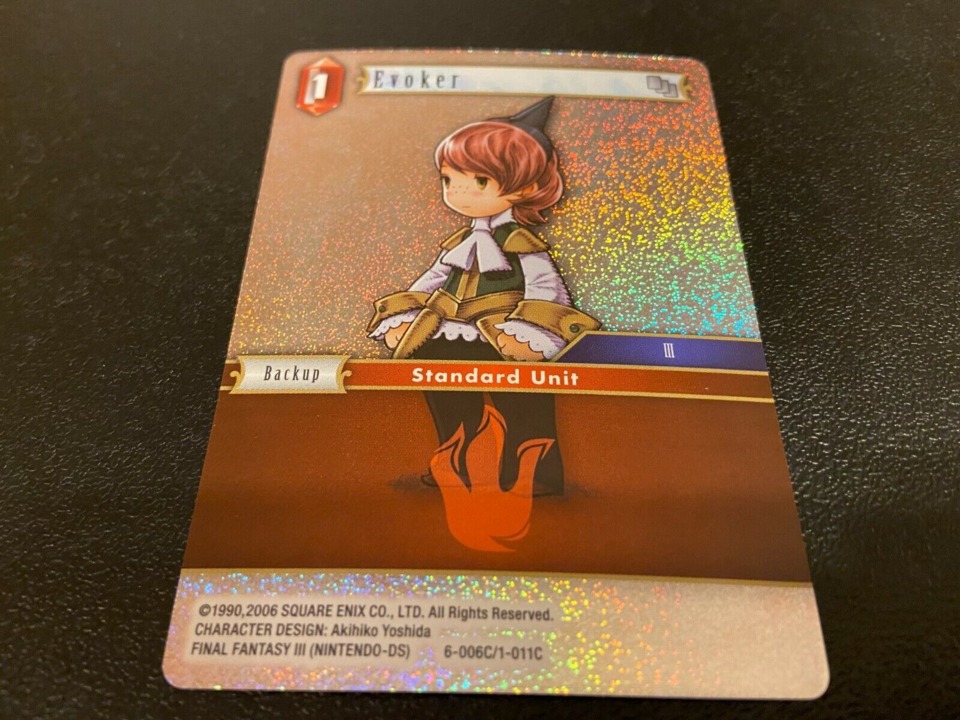
This class sucks. With the Evoker, you can review a list of Final Fantasy III's early summons. Each has a "White" and "Black" variant of what that summons can do. The White effect has a 100% success rate of afflicting enemies with a negative status effect, and the Black effect involves casting an elementally aligned spell that ignores the Magic Defense stat of any possible enemies on the screen. The Summons you can use at this point suck shit; worse, the Evoker cannot directly pick which abilities their summons use. No matter what, there's a fifty-fifty shot the summon in question will either do damage OR do something that involves a status effect. Even when you level up your Evoker and gain better summons, you are still at the whims of Lady Luck, which, in my case, means seeing the same Chocobo kick move more than a dozen times.
Changes For the 3D remake -EVERYTHING IS STILL THE SAME, SO THE JOB STILL SUCKS! As in the original, you have no direct control over what your summons do. As a result, this job feels oddly useless, which relegates these awesome-looking summons to the periphery until you get the Summoner. I should provide some context as to the thought process on why the Evoker is such a headache. Final Fantasy III was a game that pushed the Famicom/NES to its technological limits. Including flashy monster animations was essentially a strut that the designers wanted you to work your butt off to see because they busted their asses to include them in the game.
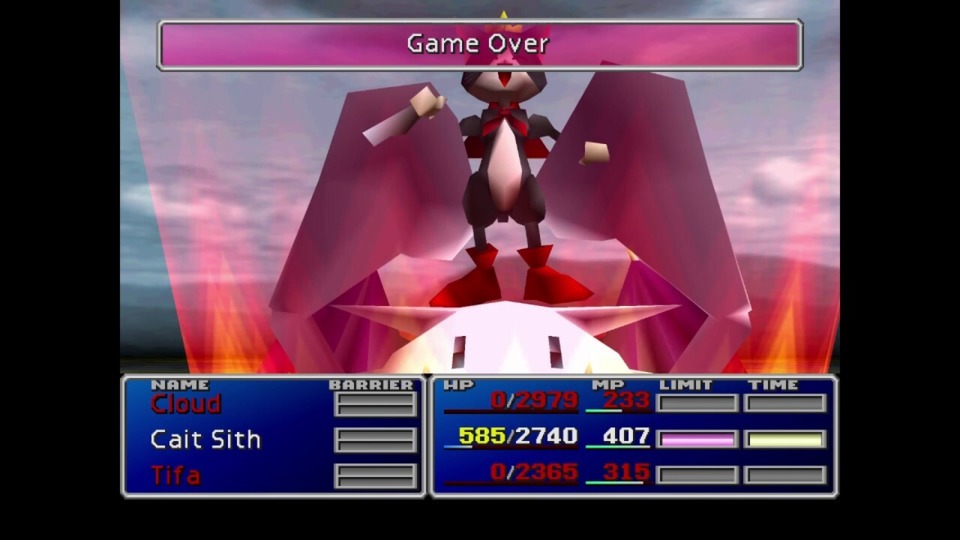
Franchise Comparison - When I think about underpowered playable Final Fantasy characters that rely on luck to a frustrating degree, two names immediately come to mind. First, you have Cait Sith, whose slot-reliant combat system ensures they are never a character you can rely on to help you in a sticky situation, much like Final Fantasy III's Evoker. Also similar to the Evoker, he joins your party alongside some bruisers, but at least the Evoker doesn't have a non-zero chance of wiping out your party when you least expect it. The second name that comes to mind is Selphie from Final Fantasy VIII. Sure, the Junction System in Final Fantasy VIII means you can make anyone capable of leveling Mt. Everest. Still, when it comes to Limit Breaks, Selphie is someone whose Luck-base swings can drive you crazy. Much like Cait Sith, she also has a smidge of a chance of prematurely ending your game.
Bard - [Rating: Famicom Version: D+; 3D Remake: C-; Pixel Remaster: F]
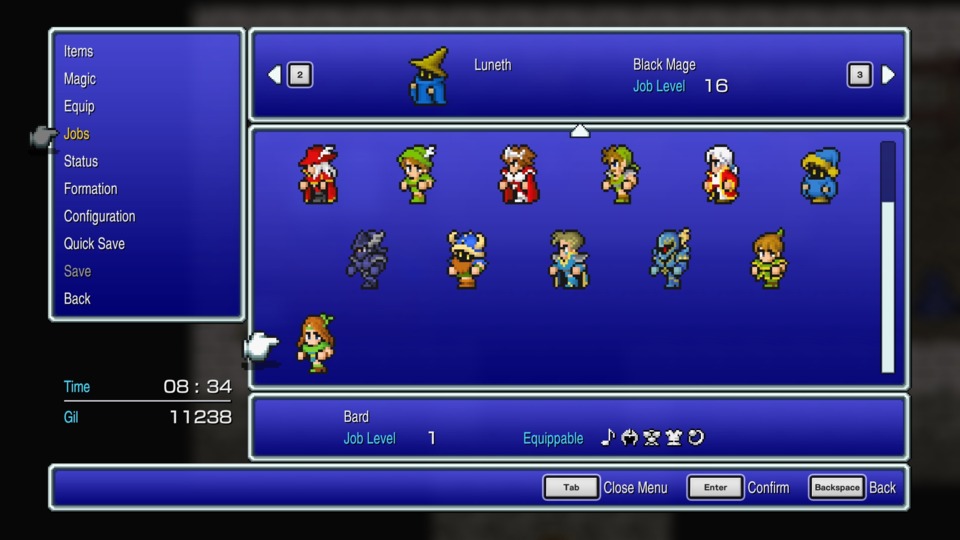
I KNOW!I said I wouldn't give different grades for the same job across multiple versions, but the Bard is such a fringe case that I had to do it! The Final Fantasy team of this era had a thing about Bards having terrible stats, hence Edward in Final Fantasy IV, but things are way worse in Final Fantasy III. On top of that, Final Fantasy III's Bard feels like a halfway complete job as its harps do shit damage, and in the Famicom version, there are no added effects to any of your attacks. The Bard is basically a shitty DPS class. Some harps have a chance of inflicting a status effect, but there are no party-wide buffs or healing spells when you sing in the Famicom version of Final Fantasy III. Fun fact: the last two harps in the Famicom version are bugged, with the Lamia Harp not functioning as intended and the Dream Harp glitching out of the world and being impossible to acquire! Instead of bestowing effects through harps, the Famicom version of the Bard had two additional commands: Cheer and Scare. Cheer increases the strength and speed stat for everyone in your party and can be done more than once, while Scare lowers the level of all enemies by a single point. Cheer is a fine, if mediocre buff, and Scare can cause entire swarms of enemies to flee from combat. The issue with both is that there are better ways to skin a cat than to use either of these abilities. In the case of Scare, if you would rather not deal with the enemies on the screen, why not just run away?
Oh, but you're playing the Pixel Remaster version of the game, right? Well, the Bard IS EVEN WORSE in that version! In the Pixel Remaster, the Sing command has four unique spells, each tied to your job level for each character. At level one, the sing command only has Paeon, a light party-wide version of cure. At level ten, you unlock Minuet, which raises your party's attack and intellect stats; level twenty provides Elegy, which lowers the total damage your party takes and is not limited to whether the damage is magical or physical; the final sing ability is Requiem and unlocks at level thirty and attempts to inflict a randomly selected status effect on every enemy on the screen. Scare and Cheer are gone, and unlike the 3D remake version, there's no offensive spell that does damage. Can you see the problem? By getting rid of the skills from the Famicom version and tying the job's abilities to a character's job level, it sucks shit for hours upon end, and even when you get everything, some of the abilities rely on luck! The Bard here still gets a standard Attack option as compensation, but HOT DAMN, is it a total waste of time!
Changes For the 3D remake - Did I mention that the Bard is an entirely different beast with every version of Final Fantasy III? In the 3D remake, selecting the Sing command causes the Bard to perform a move contingent on their equipped harp. The game has five harps, meaning there are five spells to mull over. While their damage output is still relatively paltry in the grand scheme of things, the 3D remake mercifully has the damage of attacks attached to your Bard's Intelligence stat rather than their Strength stat. The available songs either increase your party's defense, increase your party's physical attack power, damage all opponents, heal the party with an AOE variant of Cura, or decrease all incoming damage for an attack. The 3D remake's Bard is better, thanks to having an offensive attack option, but only having one spell instead of a pull-down menu is a disappointment.
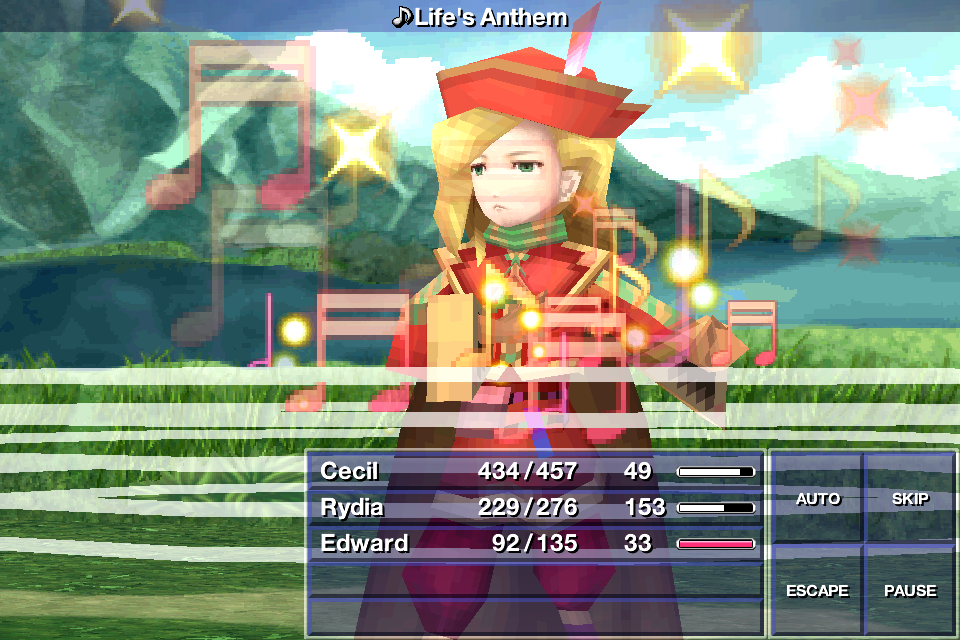
Franchise Comparison - I'm going with Hurdy The Moogle from Final Fantasy Tactics A2 and Songstress Yuna from Final Fantasy X-2! What, you were expecting me to pick Edward from Final Fantasy IV? But Songstress Yuna is the best narrative and mechanical execution of the Bard in the franchise! The concert scene in X-2 still stands as one of the most underrated moments in the series, and the Songstress dessphere can keep you and your parties going for a good chunk of the game. Hurdy embodies the cheer ability from the original Famicom version of Final Fantasy III, and his anti-undead skills prove to be clutch during an exceptionally long part of the game. BUT FINE! Let's talk about Edward, a soulless shit piece that leaves your party just as he starts to get good at doing what you want him to do! Final Fantasy IV defenders always point out that after level 70, he becomes the best character in the game, but who has time for that? Admittedly, the fact that he requires that level and length of commitment to get anything respectable out of him on the battlefield makes him a perfect analog of the original Bard job from Final Fantasy III.
Earth Crystal
Magus - [Rating: A-]
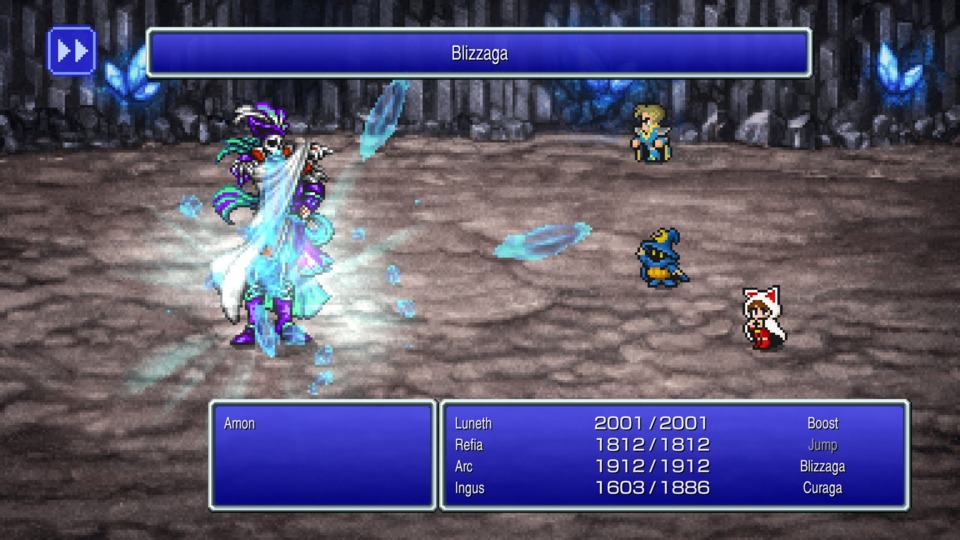
With the Magus, you finally have a class that can use all the high-tier Black Magic spells! Some of these spells can rip through the mid and late-game bosses in record time, and others are incredibly situational. Compared to the Black Mages that come before it, the Magus sacrifices a significant number of level one through three spell slots to open things up to higher-leveled ones. Nonetheless, this shortcoming matters less as you progress the game as the enemies begin to scale and render those lower spells virtually useless. The other problem with the Magus is that it does not have a ton of spell slots at the start; therefore, much like the Black Mage, you often elect to have them sit in the back row shooting arrows to preserve their most potent abilities until you absolutely need them. Luckily, the growth rate for those slots is absurd, and the massive pool of slots far exceeds that of the Black Mage and Sage, even at moderate levels. If it were not for the fact that it was replaced by the Sage and a bit too situational at its start, I would have given it my highest marks.
Changes for the 3D remake—The Magus is identical in execution, but its growth rate in the 3D remake more closely follows an exponential growth graph. Like most of the Magic-focused jobs in Final Fantasy III, the Magus starts with fewer spell slots at the start in the 3D remake, but unlike the other magic-oriented jobs, that never changes. It's not until Level 50 that the 3D remake version of the Magus stops having half as many usable spells as its Famicom and Pixel Remaster counterparts, but the deficit remains. Admittedly, the Famicom version of the job has too many slots, and the Pixel Remaster strikes the best middle ground. Nevertheless, it is still another uncomfortable example of the 3D remake of Final Fantasy III being unnecessarily challenging because so many boss encounters rely on your ability to use Black Magic.
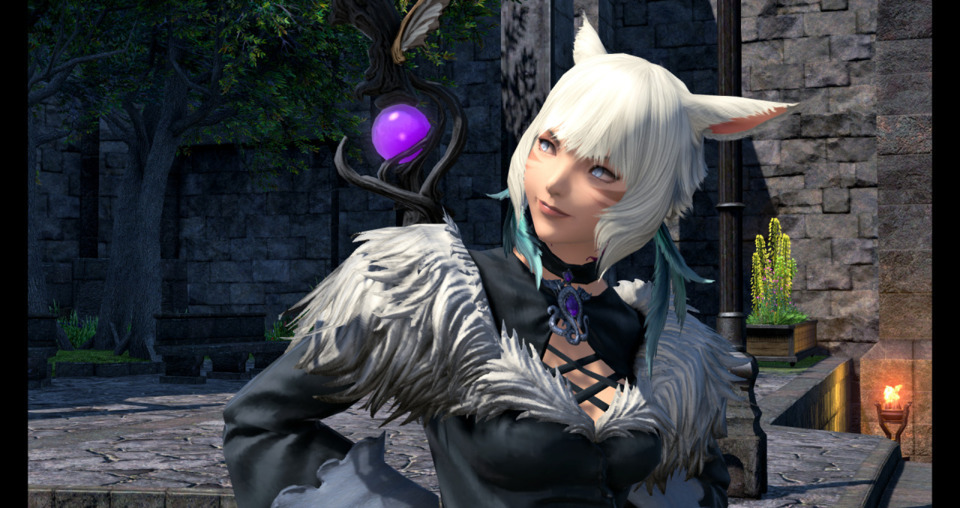
Franchise Comparison - After giving Final Fantasy XIV characters the "honorable mention" distinction for this entire feature, it is time to connect a job to one of them. A mage with an endless list of options that causes them to feel widely powerful and out of the league of the rest of the field despite looking unassuming? Yeah, that sounds like Y'shtola. The game even presents her as a queen among mages, which is what the Magus is unless you go out of your way to acquire the Sage in the Eureka cave. And I echo my point about the Magus being unassuming in its garb and presentation. It is a Final Fantasy tradition for your best magic casters not to look the part, and only on a few occasions has the franchise afforded its best mages high fantasy-like trinkets or vestiges. If I hadn't tapped Vivi and Aerith for different jobs, I could have heard claims that they deserve to be grouped here.
Devout - [Rating: A+]
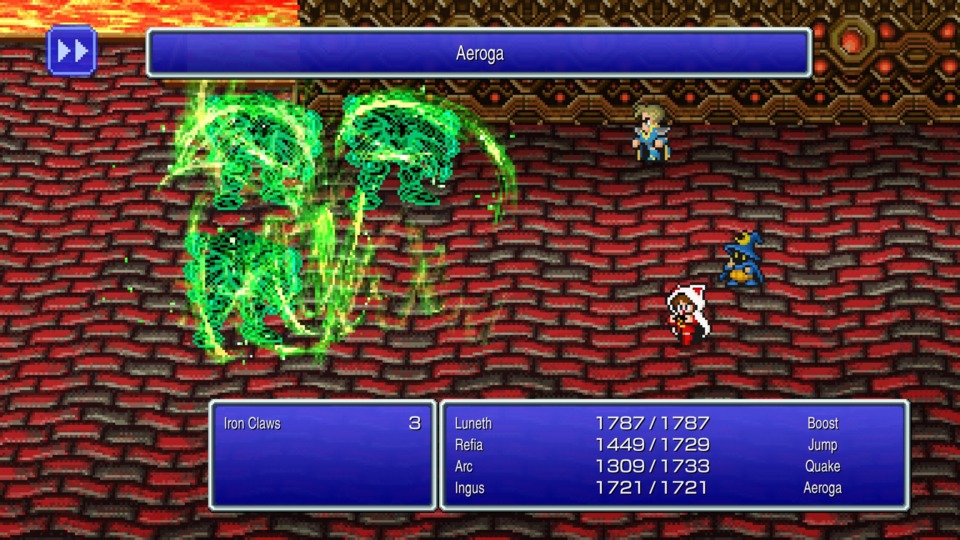
The Devout is the White Magic version of the Magus. Devouts can use all White Magic spells and have a spell slot growth to support them in casting healing spells however you see fit in the Famicom and Pixel Master versions. However, as the grade here suggests, the Devout is a few steps above its Black Magic counterpart. The reasons for this are immediately evident. While having AOE Black Magic is "nice," having AOE healing spells is a thousand times more valuable and critical to your ability to progress through the game. Getting Curaga and Revive is vastly more important than getting Flare or Meteor, and it's not even a contest. The minute you get Curaga, the need to worry about stocking up on potions and Phoenix Downs before every dungeon drops dramatically. Likewise, Devouts get some reasonably attractive offensive tools. Keeping with tradition in Final Fantasy, Wind Magic is a White Magic spell school that includes Tornado and many helpful buff and debuff spells. Haste, Protect, and Esuna can be critical tools during some late-game bosses, but the cherry on top must be Holy, which causes almost every Undead enemy to melt away in a single move.
There's another feather in the Devout's cap that the Magus doesn't have. Even after you unlock the Sage, there are times when you rightfully might not swap your Devout out, though the same does not apply to your Maguses or Summoners. Sticking with the Devout provides peace of mind because the Sage has far fewer spell slots than any prior Magic-based jobs. Especially during the game's final dungeon and boss gauntlet, you don't want to be stingy about your ability to cast Curaga or Arise. Budgeting your Summons or Black Magic spells is easier because you know only to use them when in a bind or during a boss battle. However, who's to say you don't get unlucky with a random encounter and take more damage to a single character than expected? If you opt for nothing but Sages, that can be a problem, but that can be avoided with one character sticking around as a Devout.
Changes For the 3D remake - The 3D remake repeats everything it did with the Magus with its version of the Devout. Its spell slot growth rate is slower, and its stats are also curved. No matter, the Devout is as critical in the 3D remake as it is in any version of Final Fantasy III. Because bosses are bound to hit you harder in this version of the game, and twice at that, you will need healing. As a result, my word of caution about not immediately swapping all of your magic casters to Sage applies even more. For most that reach Final Fantasy III's final moments, continuing to use the Devout provides insurance as you know you have healing spells you can use liberally.
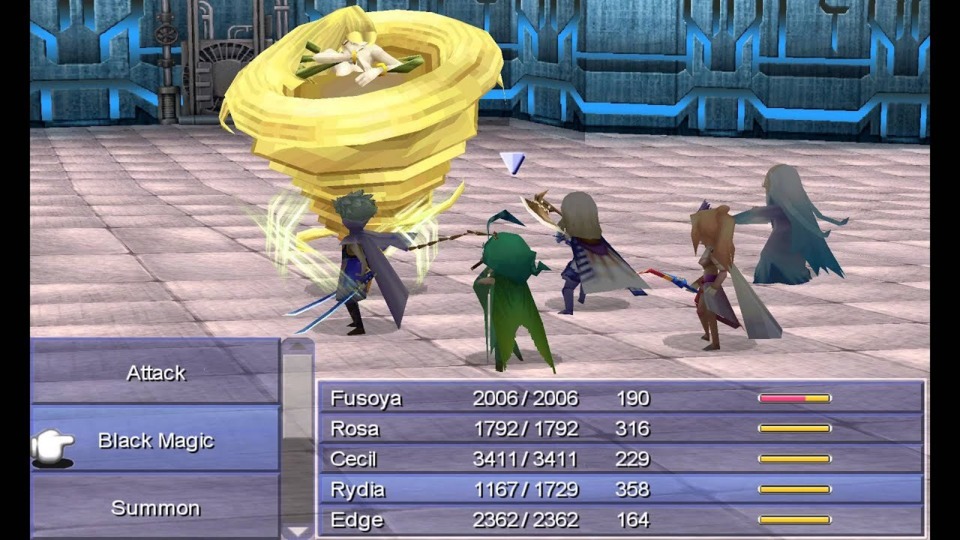
Franchise Comparison - I want to put Rosa from Final Fantasy IV here. I know some people would group her in the "White Mage" category, but she has more meat on her bones long-term beyond healing, though that is the lion's share of what she adds to the party. The big difference between a standard White Mage-like and a Devout-like is whether or not they can cast Holy, the series' ultimate White Magic spell. Rosa gets that, and when she does, along with all of her positive buff spells, she contributes much more to your party dynamics than simply reviving people when they die. It pains me to say anything positive about Final Fantasy XIII, but you can also lop Hope into here. While he's incredibly underpowered for much of the game, when you specialize him down his Medic tech tree, he unlocks Holy, which does ungodly gobs of damage to even magic-resistant bosses. If you want an out-of-pocket pick, I'd like to interest you in Minwu in Final Fantasy II. Though he is only in your party for a short amount, he's so immediately above the abilities of your party members that they feel like they are in a class of their own, which is what the Devout feels like.
Summoner - [Rating: B]
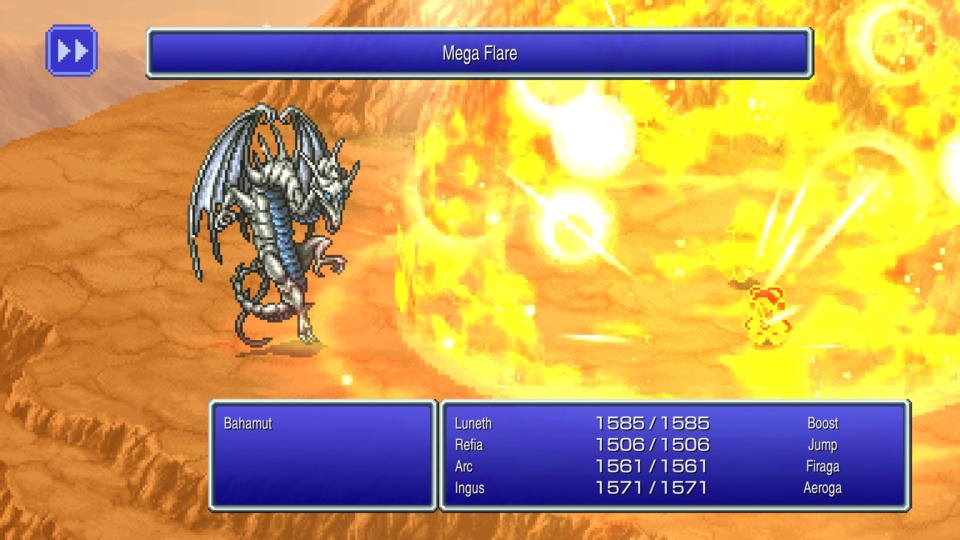
I want to give this class a higher score, but I cannot. The Summons struggle to tread water over your white and black magic spells unless you complete the optional dungeons that unlock the best summons. Even then, your spell slot's slow growth with the Summoner seriously limits how often you can use the best summons in a battle. Sure, Bahamut might be able to inflict more damage in a single turn than most of your high-tier black magic spells, but you most likely can only cast them once or twice per battle, whereas you have dozens of casts of Flare, Meteor, and Quake. Even then, the Summons cannot compare to some of your best martial class options. An adequately leveled Black Belt will probably do more for less than your average mid-level Summoner. Nonetheless, having a Summoner in your rotation isn't a terrible idea, as they don't need to worry about spell slots, and they have some decent options that can take the burden off your other Magic casters. And there's no denying that the pixel work for these Summons is incredible and absolute eye candy in the Pixel Remaster.
Unfortunately, the Summoner has a weird downside that never made sense to me. With the Evoker, each Summon inflicts damage or provides a handy buff or healing spell. When you use the Summoner, the Summons only do damage. Admittedly, their damage throughput is miles better than that of the Evoker job's Summons, but losing those non-damage options for every summon is baffling. Maybe I may want Carbuncle to cast Reflect or the Chocobo to heal my party. Who's to say? These Summons suddenly being unable to do that is downright strange and removes class utility for no apparent reason.
Changes for the 3D remake—Are you ready for me to say it for a third time? The 3D remake has the Summoner start and end with more spell slots than in the Famicom and Pixel Remaster versions. Wait, what?! Yup, you're reading that right! Of the dozens of magic classes in the game, the Summoner is one of the rare examples where the 3D remake almost immediately unlocks your abilities and options. Now, the 3D remake does make the bizarre decision to have the level one Summoner only start with one cast of a level one Summon. However, the 3D remake version of the job unlocks the level five Summons ten levels earlier and gives you the most casts of every summon across every version of Final Fantasy III. This growth rate is what the Summoner SHOULD BE! If I put in the work to get all of the most extraordinary things for a job, and doing that involves completing a batch of new dungeons, I should be able to see that shit at least more than once every blue moon.
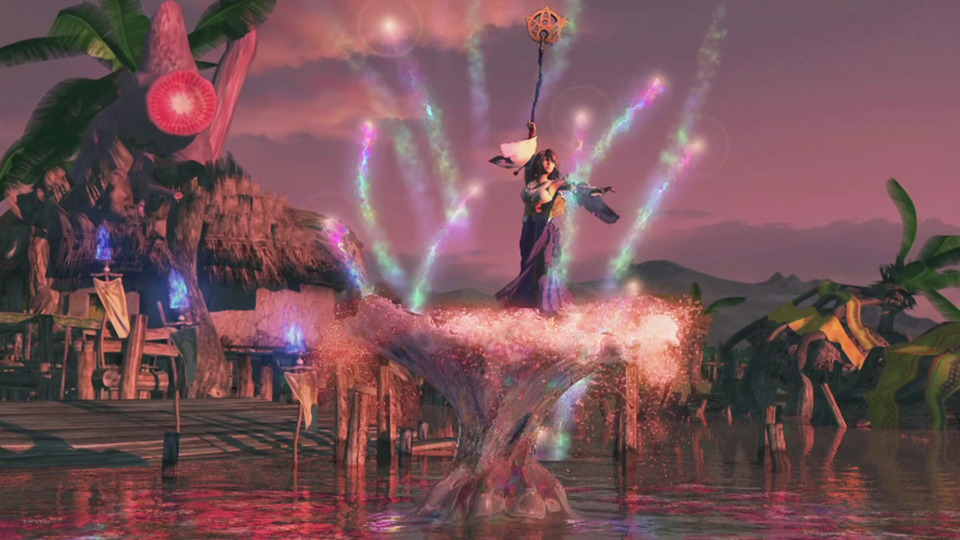
Franchise Comparison - It's Yuna. Terra is in second place, and Rydia deserves to be in this conversation, but come on now, this goes to Yuna. I know Final Fantasy IX fans will be on my throat about not mentioning Garnet or Eiko. Garnet would have been an honorable mention if it had not been for that two-hour crease when she is completely useless. Still, seriously, Yuna is the current gold standard on making a summoner both a narrative and thematic touchstone for the Final Fantasy game they inhabit. Terra loses points because she is in a game wherein everyone can utilize summons, though she is the first character you see in Final Fantasy VI to use spells. Rydia's status as a Summoner is equally poignant at times in Final Fantasy IV when the plot kicks up the wet works regarding her father, but Yuna is special. No game takes the idea of the Summoner being its own job and runs with it as a distinct identity and skill set only a few can use, quite like Final Fantasy X. And GODDAMN, if Final Fantasy X doesn't make you work like Final Fantasy III does to unlock some of Yuna's best assets. Each of her Summons covers a different need, with only the last few completely replacing earlier options. Play Final Fantasy X; it's a good game.
Eureka Classes
Yes, these classes are "optional," but I would be a fool if I did not discuss them in some capacity.
Sage - [Rating: A]
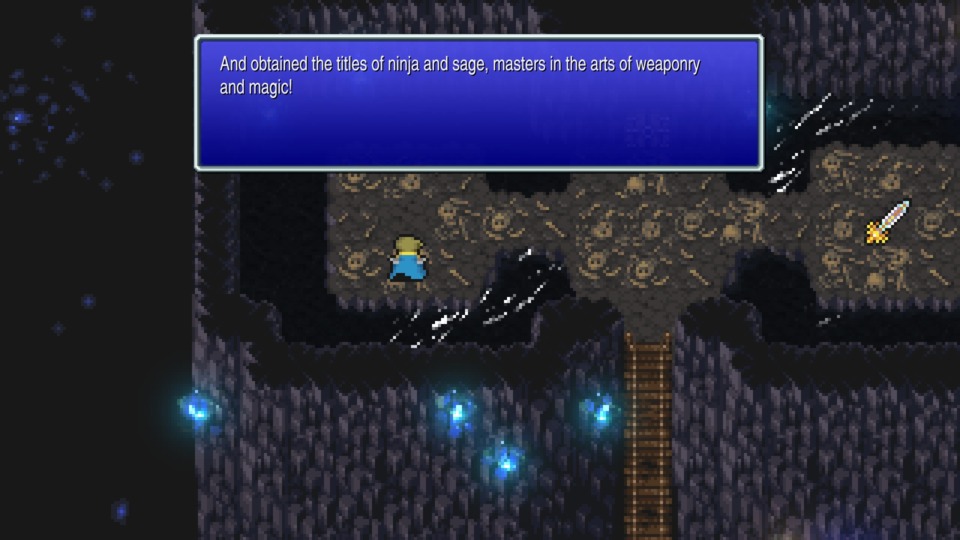
Giving the Sage a lower score than the Devout might seem like a spicy take, but hear me out. Yes, you have Black, White, and Summoning Magic available in a single job. With Summoning Magic on tap, you finally have a magic-based job that is only partially caught with its pants down when you run out of spell slots. Nonetheless, the limited number of spell slots is a huge letdown. When you get the Ninja, the need for any other damage-dealing martial class plummets. There's no need to consider alternate martial classes, nor do you need to think about Black Magic as an alternative to your weapon-dealing damage output. Thus, if you are popping off spells, it is overwhelmingly going to be White Magic, and there are times when you might still use the Devout over the Sage because it has more spell slots to burn. You could do what I did during the trek through the World of Darkness and have one Devout and one Sage alongside two Ninjas if you're growing slightly concerned about your White Magic spell slots running low. Nonetheless, when you reach some of the most demanding bosses in the game, your Sage should be going HAM by casting every tool in its toolbox, and as long as they are at a decent level, you should be perfectly content.
Changes for the 3D remake—The 3D remake nerfs the Sage and Ninja in a few crucial regards, and its reasoning is immediately apparent. The 3D remake wants you to complete a new optional questline to unlock its Onion Knight job, which is its best job. As a result, it has the Sage and Ninja unlock with the Earth Crystal. The core concept of the Sage as being able to cast level one through eight White, Black, and Summoning Magic spells still stands, but with one massive caveat. That caveat pertains to how it uses Summons as it uses them using the Evoker's ruleset instead of the Summoner's. Likewise, the 3D remake drops the Sage's number of spell slots to a quarter of what the Sage gets in the Famicom and Pixel Remasters. While I don't love this change, there's something to this nerf that I do respect. In practice, the Sage becomes the natural evolution of the Red Mage and serves a similar role in that it helps you keep all options on the table when entering unclear combat situations. Objectively, in a world where we care about sound and fair game design and not breaking shit, this is how things should be. That said, Final Fantasy III doesn't play fair, and not being able to break it via a direct route sucks shit.
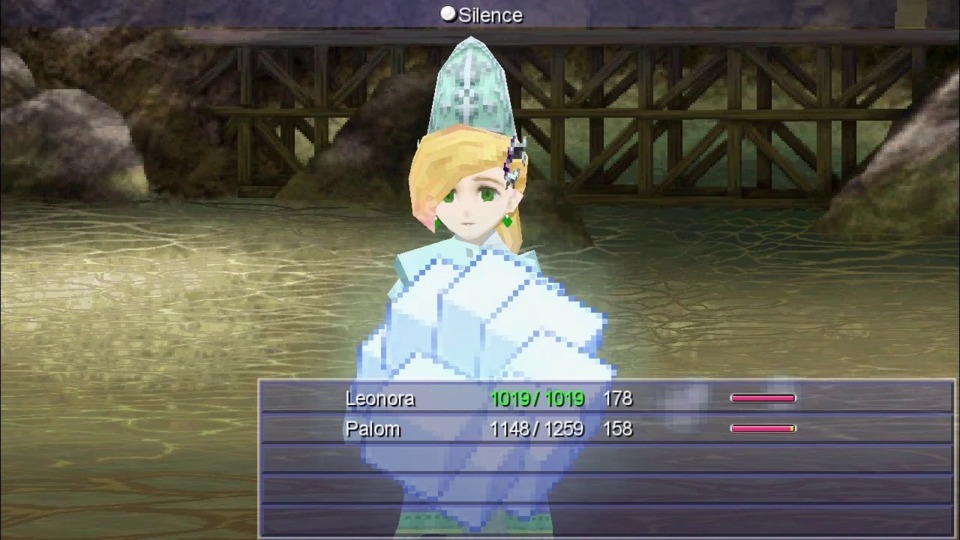
Franchise Comparison - In theory, this is where I would mention Fusoya from Final Fantasy IV. Fusoya can use White and Black Magic, but what limits them is a limited pool of MP, which you can only circumnavigate starting at level seventy. Fusoya also represents the Sage job in that he has an obvious downside; the problem is that his downside is way too much at the point where you get him. Fusoya is definitively the worst playable character in Final Fantasy IV, and on top of that, he's a temporary character. So, it guts me to mention this pile of dogshit, but we need to turn our attention to Final Fantasy IV: The After Years for a clearcut example of a Sage in the main series. In that game, you have Leonora. Yes, you need to go out of your way to complete a series of quests that open up her ability to use Black Magic, but once you do, her only downside is that she has a paltry amount of HP. Her MP is decent and only a few steps below the other magic casters you get in The After Years. Now, if you will excuse me, I have to vomit into a toilet because I feel nauseous saying anything remotely kind about The After Years.
Ninja—[Rating: S+]
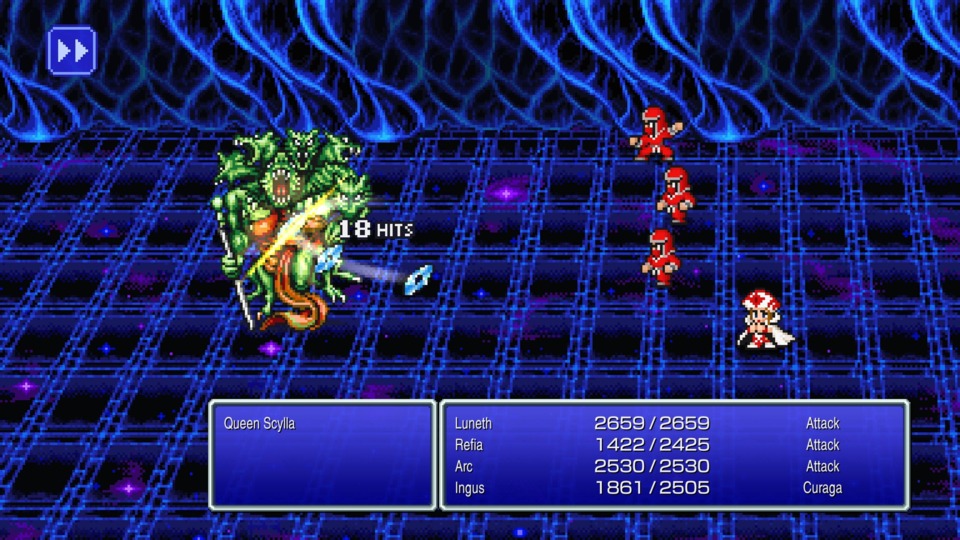
The OG Final Fantasy III Ninja is utterly busted, and in the Pixel Remaster, the Throw command, if you know how to exploit it, is one of the easiest ways to destroy everything the game has left up its sleeve. If you complete Eureka, there's no reason to use any damage-dealing martial class other than the Ninja. Period. The reason for this is clear. Ninja stars, or shurikens, do more damage than virtually everything else in the game, and only Ninjas can use them. In the original Famicom release, the Ninja had no special abilities but could equip almost every non-exotic weapon class, which included throwing weapons. However, lacking the Throw command, shurikens, and all throwable weapons for that matter, were equipped into your weapon slot, and each time you used them, you would expend them until your ammunition was exhausted. If you ran out of ammo during a battle, your Ninja would be stuck fighting with only their bare hands, which was an inconvenience, to say the least.
As in previous job types, the Pixel Remaster takes a few notes from the 3D remake but, unlike the latter, preserves the Ninja's broken status as a venerable world destroyer. Shurikens can now be accessed using the Throw command, which pulls up a menu of throwable weapons, and you can equip standard weapons for your Ninjas as they still have a standard attack. If anything, this is one of the rare examples of the Pixel Remaster version of the job being the strongest one because the Ninja can utilize its most potent resource (i.e., throwing stars) without stripping away your ability to do above-average damage with a weapon not tied to an ammo count. Also, the formula for the Throw command is BUSTED! To be exact, it is:
Throw Damage = (Weapon Attack x 2.5 + 100) x Power x 10 / 99 x Bonus
Bonus = (Random # between 1.0 and 1.8)
Can you see the problem? Shurikens have a Weapon Attack score of 200, and no modifiers are tied to your job proficiency, meaning your base damage is mainly free from your character's levels. In my case, I beat the Cloud of Darkness in less than ten minutes because I had two Ninjas endlessly spamming ninja stars until their ammo was spent.
Changes For the 3D remake - Similar to the Sage, with the 3D remake having its sights set on the Onion Knight being its most OP job class, the Ninja has taken a few notable steps back. First, instead of being able to use almost every weapon type, they are limited to Swords, Daggers, Katanas, and throwing weapons. That's not a huge blow, considering those are the ones you only care about, and with the inclusion of the Throw command, you have the same upsides I mentioned with the Pixel Remaster. Shurikens are less potent in the 3D remake but still pack a wallop. The weird thing about the 3D remake's version of the Ninja is that while it is notably weaker, it is a more well-rounded job. The Ninja can attack from the back row, and if equipped a certain way, they can attack from there without any combat penalties. You can also equip them with weapons that absorb HP, like Blood Swords or an Orichalcon knife, and if you dual-wield these together, you create a walking murder machine that cannot die outside of a scant few boss battles. The Ninja is still a highly recommended class; it just isn't a job you can prescribe to automatically win the game, like in the Famicom or Pixel Remaster versions of Final Fantasy III.
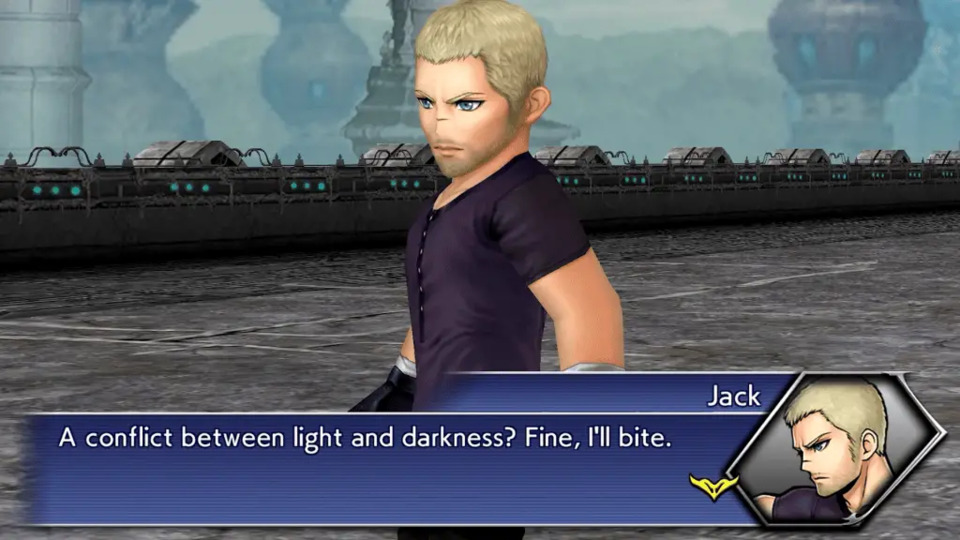
Franchise Comparison - Who are the most powerful characters in the Final Fantasy franchise, discounting villains or cosmic figures? Mind you, these need to be characters that take center stage, and you never shirk away from them when you gain access to them. I can think of only two characters. The first is Noctis from Final Fantasy XV. Is Noctis an anime shit boy? Sure. Does Noctis also have a ring that can delete you from existence should you get on his wrong side?YUP! That poor Adamantoise never knew what hit it. The other example that comes to mind is Jack Garland from Stranger of Paradise Final Fantasy Origin. I know. The memes with Jack are hilarious, but hear me out. Do you ever want to be playing as any character besides Jack in any video game ever made? He can become anything you want, and when you know how to build him correctly, he punches everything in the face until they are dead. That's metal. With the release of the post-launch DLC, Jack has gotten even more busted, especially with the job that can shoot things from a distance. Finally, much like the Ninja in the Famicom or Pixel Remaster releases of Final Fantasy III, once you find a busted strategy for Jack, there's little reason for you to abandon it, which is both a strength and weakness of Stranger of Paradise's core design.
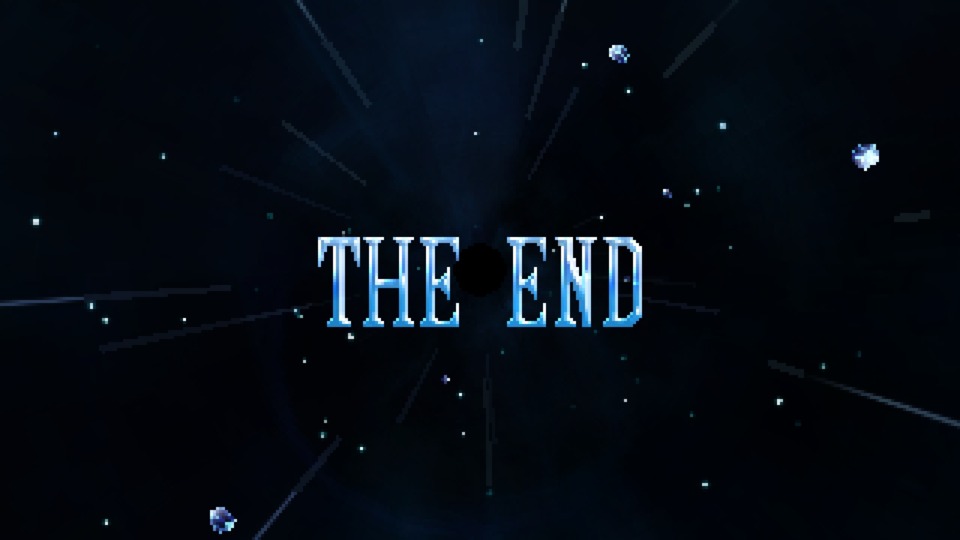
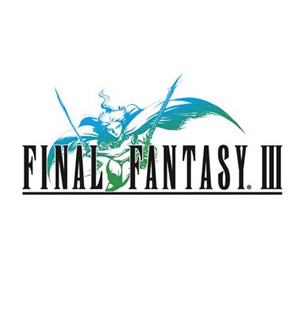
Log in to comment